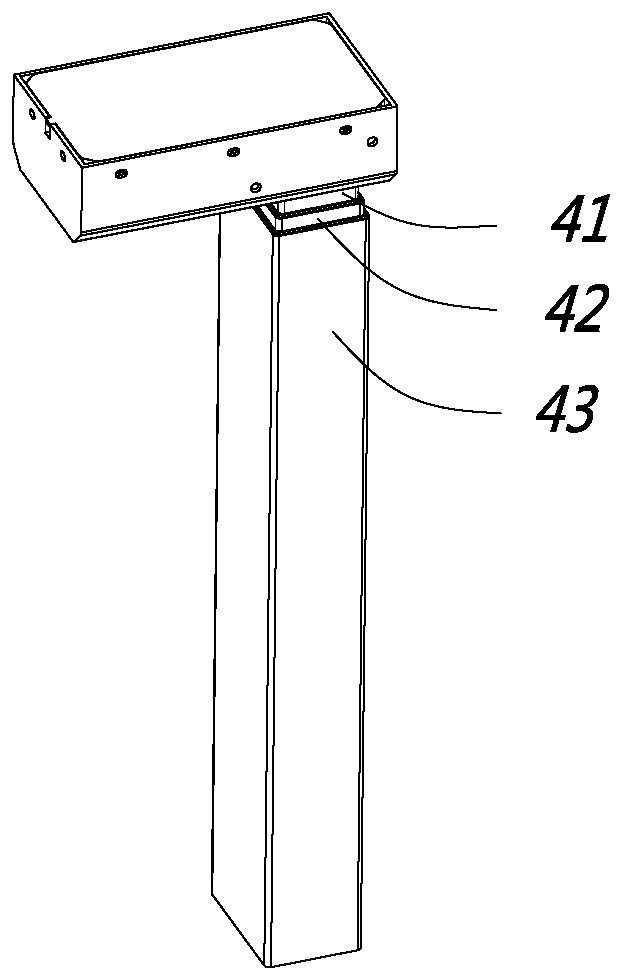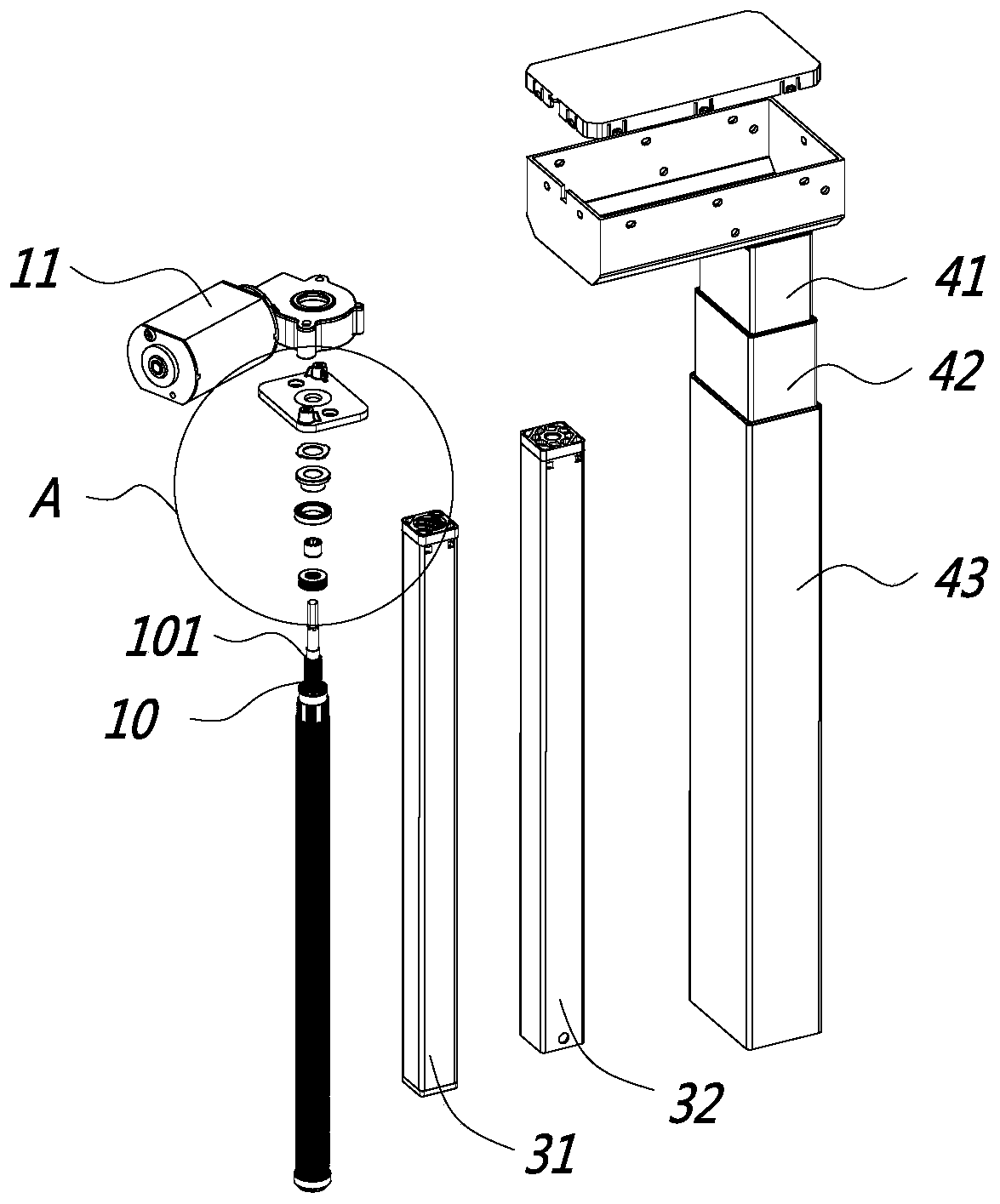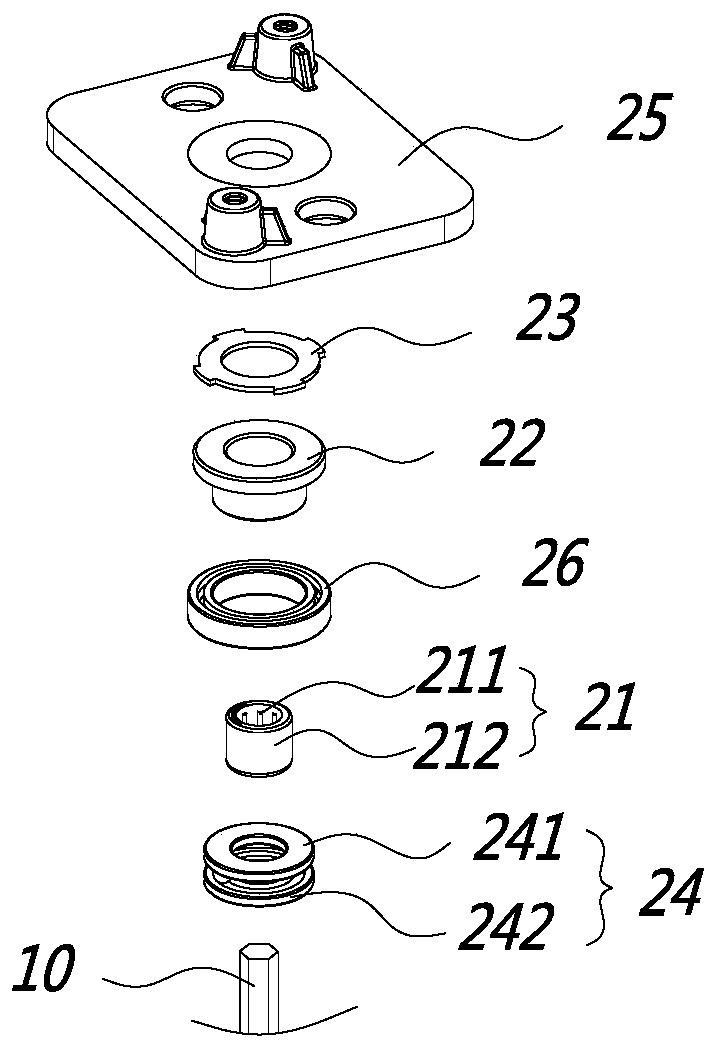Self-locking device for linear actuator and linear actuator
A technology of linear actuator and self-locking device, applied in the direction of transmission device, brake type, legs of general furniture, etc., can solve problems such as insufficient self-locking force
- Summary
- Abstract
- Description
- Claims
- Application Information
AI Technical Summary
Problems solved by technology
Method used
Image
Examples
Embodiment 1
[0033] like Figure 1 to Figure 5 As shown, the application of the self-locking device in the linear actuator is shown. There are many types of linear actuators, such as lifting columns, such as electric push rods, etc. The self-locking device of this embodiment is specifically used in a lift On the column, the lifting column is usually used for electric lifting table, so it is also called lifting table leg. As far as the lifting table is concerned, the driving motor 11 is used to drive up and down under normal conditions, but once the driving motor 11 does not work, or is in an abnormal power failure, the lifting column itself needs to have a certain self-locking function to prevent the desktop. The problem of automatic lowering occurs when a large load is applied, so the lifting column of the existing electric lifting table usually needs to have a self-locking device, and the self-locking device of the existing lifting column is usually a torsion spring brake.
[0034] In t...
Embodiment 2
[0045] like Image 6 and Figure 7 As shown, the difference between this embodiment and the first embodiment is that in the first embodiment, the frictional force is generated between the friction member 23 and the friction collar 22 by means of end contact, while in this embodiment, the frictional member 23 Between the friction collar 22 and the friction collar 22, the frictional force is generated by the circumferential side part of the friction collar 22 and the friction piece 23.
[0046] In this embodiment, the friction member 23 includes a friction outer ring installed in the support base 25. In this embodiment, since the support base 25 includes a base inner cavity 251, the friction outer ring can be used with the inner cavity of the base 251. The wall of the cavity 251 is installed by interference fit. Of course, in other embodiments, other fixed connection methods can be used. The friction outer ring is sleeved outside the friction collar 22, and the friction outer r...
Embodiment 3
[0051] same as Figure 1 to Figure 5 As shown, this embodiment is a linear actuator. As mentioned above, the linear actuator of this embodiment is preferably a lifting column. This embodiment includes a first sleeve 31, a second sleeve 32, a rotating The screw 10, the drive nut, and the drive motor 11. The drive motor 11 drives the rotating screw 10 to rotate. When the rotating screw 10 rotates, it drives the drive nut to move axially, and the drive nut moves to drive the first sleeve 31 and the second sleeve 32. Relative scaling occurs.
[0052] The lifting column in this embodiment is preferably a three-section lifting column, wherein the first sleeve 31, the second sleeve 32, the rotating screw 10, the transmission nut, the driving motor 11, etc. constitute a transmission assembly, the lifting and lowering The upright column also includes an inner tube 41, a middle tube 42, and an outer tube 43, and the transmission assembly drives the inner tube 41, the middle tube 42, an...
PUM
 Login to View More
Login to View More Abstract
Description
Claims
Application Information
 Login to View More
Login to View More - R&D
- Intellectual Property
- Life Sciences
- Materials
- Tech Scout
- Unparalleled Data Quality
- Higher Quality Content
- 60% Fewer Hallucinations
Browse by: Latest US Patents, China's latest patents, Technical Efficacy Thesaurus, Application Domain, Technology Topic, Popular Technical Reports.
© 2025 PatSnap. All rights reserved.Legal|Privacy policy|Modern Slavery Act Transparency Statement|Sitemap|About US| Contact US: help@patsnap.com



